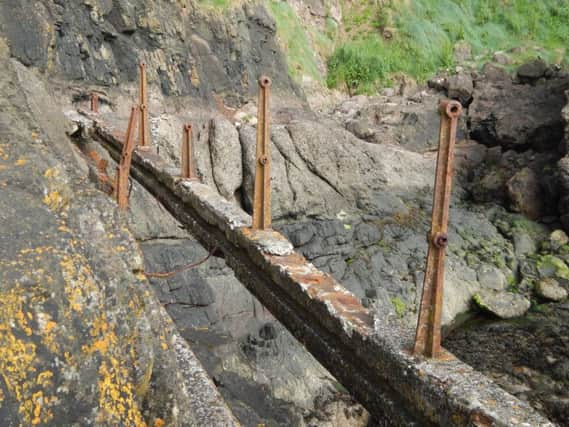Gobbins visionary worked with Isambard Kingdom Brunel


The Gobbins had been known as a dramatic location to visit or view from as far back as the 1680s, when Richard Dobbs mentioned them on his account of a journey around East Antrim.
Dobbs expressed his fear of the ‘high rocks of gray stone’ and this was echoed over a century later by Ulster Scots poet James Orr, Bard of Ballycarry, who said that the cliffs both appalled and pleased his ‘wondering eye’.
Advertisement
Hide AdAdvertisement
Hide AdIn the 1830s an advert in the Belfast News Letter informed readers of a cruise from Belfast past the Gobbins to Larne on the Superb, highlighting that the towering cliffs had become an attraction for more than just locals.


It was probably one man more than any other, however, who brought the vision of what the Gobbins could become and shaped the future development of the area. Berkeley Dean Wise was born, possibly at New Ross, County Wexford, in 1853 and was an outstanding engineer, who was also a pioneer of the tourist industry in the north of Ireland.
He was educated in England and later at Trinity College in Dublin.
When he was 22 years old he was appointed the Bray Head railway line south of Dublin, and he was involved in developing a safe railway line, including tunnels and bridges, on what was a challenging landscape.
Advertisement
Hide AdAdvertisement
Hide AdAmong those whom the young Wise worked for on the project was the famous engineer Isambard Kingdom Brunel. In 1877 he moved north when he was appointed Chief Engineer on the Belfast and County Down railway, and in 1888 became Chief Engineer to the Belfast and Northern Counties Railway.


Wise had more than a passing interest in tourism development and a holiday in Switzerland is said to have convinced him in relation to the potential for tourism in Antrim, particularly Glenariff and the Glens, which he regarded as Switzerland in miniature.
His crowning tourism achievements and outstanding engineering success were to be in Antrim, starting with the Glenariff Forest Walk, where wooden bridges and paths showed off the waterfalls in the Glen to best advantage.
Wise was also involved in the development of Whitehead, planning a promenade, importing sand for a beach, creating a pavilion for summer entertainment and developing the Blackhead Path.
Advertisement
Hide AdAdvertisement
Hide AdWise also then developed the famous Gobbins Path in Islandmagee, which, as a new generation has learned, was a challenging engineering prospect. But the challenge was worth taking up for Wise and the railway company, as they once attracted thousands of visitors per day at its peak in the summer months of the early years of the 20th century.


The path opened in 1902 and Wise oversaw its creation and development until 1906 when he sadly became ill, subsequently dying at his sister’s house in Portrush in 1909.
His work at the Gobbins included the development of a series of different bridges, which included the famous tubular bridge, which was said to be either based on the shape of a railway carriage or that of the structure to secure railway tunnels.
Thousands of postcards and photos of the tubular bridge once circulated around the world, as have more modern photos from the Gobbins in recent times.
Advertisement
Hide AdAdvertisement
Hide AdThe Gobbins really was Wise’s crowning glory as an engineer and although the path was not completed as he would have hoped, it continued to be a popular attraction until the 1950s.


The Gobbins re-opened in 2015 but has seen problems resulting in closure again in 2016. It is due to open at the end of this month.
Local author and historian, the late Paddy O’Donnell successfully lobbied the old Carrickfergus Borough Council to place a memorial stone in his honour at the start of the Blackhead Path.
The path once went right around to the Gobbins and there is a Wise’s Eye at the start of the modern cliff path, but there is also a second one nearer Blackhead which is now much less well known since the path no longer follows that route. Berkeley Point at the Gobbins is also named in his honour.
Advertisement
Hide AdAdvertisement
Hide AdThere is no doubt that Wise was an engineering genius and also one of the early tourism pioneers of the 20th century in Ulster.
Ironically his grave in Belfast’s City Cemetery is among the most modest there but maybe that is the way he would have wanted it.
For Wise, being remembered at his impressive paths at Blackhead and the Gobbins, would probably be enough.